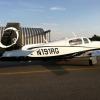Whats normal Oil temp on ovations
-
Members Online
- Zippy_Bird
- Schllc
- Marc_B
- Sense
- jamesyql
- dzeleski
- TCC
- Pinecone
- 802flyer
- JoeM
- Hank
- SKI
- Greg Ellis
- 65MooneyPilot
- Alan Fox
- mhrivnak
- bigmo
- Gone
- tankles
- 201Mooniac
- CCAS
- wolfbyte
- Rusty Pilot
- crustymuffin
- LANCECASPER
- daytonabch04
- Joshua21
- GeeBee
- N201MKTurbo
- Will.iam
- 25square
- Kelpro999
- Bike_rider
- Aaviationist
- 1980Mooney
- DonMuncy
- Rsmithref
- PeterRus
- Peter T


Recommended Posts
Join the conversation
You can post now and register later. If you have an account, sign in now to post with your account.